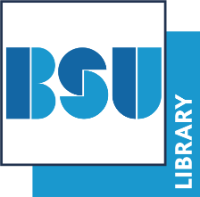Lovett, M  ORCID: 0000-0003-3599-7886
(2024)
'Artificial creativity and tools for understanding: music, creative labour and AI.'
In: Gullö, J-O, Hepworth-Sawyer, R, Paterson, J, Toulson, R and Marrington, M, eds.
Innovation in music: technology and creativity.
Routledge, Abingdon, pp. 267-277.
ISBN 9780367633363
ORCID: 0000-0003-3599-7886
(2024)
'Artificial creativity and tools for understanding: music, creative labour and AI.'
In: Gullö, J-O, Hepworth-Sawyer, R, Paterson, J, Toulson, R and Marrington, M, eds.
Innovation in music: technology and creativity.
Routledge, Abingdon, pp. 267-277.
ISBN 9780367633363
|
Text
16639.pdf - Accepted Version Restricted to Repository staff only until 27 September 2025. |
Abstract
While implementations of AI are offering a range of solutions to support, stimulate and improve music creativity, production and distribution, the wider quest of AI research to understand and replicate intelligence is generating a number of compelling perspectives and implications. This chapter explores developments in AI and music so as to consider potential impacts on music production and creativity and to think more widely about the extent to which human creativity might also be ‘artificial’. The chapter engages with two key narratives. It examines the economist Daniel Susskind’s contention that the paradigm shift initiated by contemporary developments in AI will have significant consequences across human society, and it responds to the philosopher Reza Negarestani’s suggestion that developments in AI have already brought us to a new understanding of our own relationship with intelligence. The chapter concludes by reflecting on these two relationships – between AI and creative labour and between artificial and human intelligence – using the concept of ‘artificial creativity’ as a means to consider what AI’s use across a range of music-related contexts can tell us about the nature of creative processes.
| Item Type: | Book Chapter or Section |
|---|---|
| Divisions: | Bath School of Music and Performing Arts |
| Related URLs: | |
| Date Deposited: | 31 Oct 2024 11:51 |
| Last Modified: | 07 Nov 2024 12:18 |
| URI / Page ID: | https://researchspace.bathspa.ac.uk/id/eprint/16639 |
 |
Request a change to this item or report an issue |
 |
Update item (repository staff only) |

 Tools
Tools Tools
Tools